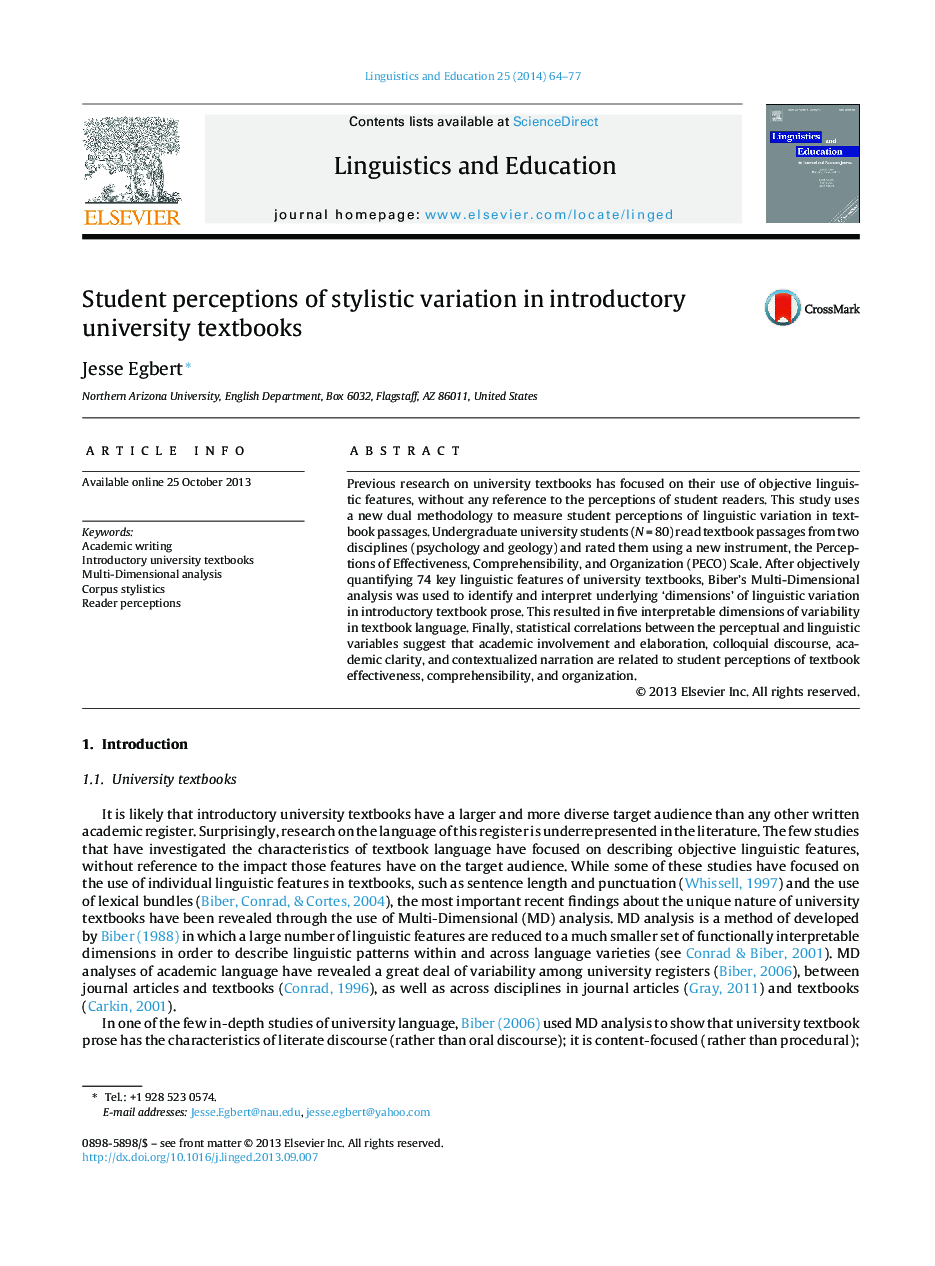| Article ID | Journal | Published Year | Pages | File Type |
|---|---|---|---|---|
| 366156 | Linguistics and Education | 2014 | 14 Pages |
•This study measures the impact of textbook author style on student readers.•Reliability analyses support the usefulness of a new measure of reader perceptions.•A Multi-Dimensional analysis resulted in five dimensions of linguistic variation.•Academic clarity and colloquial style are related to perceived text effectiveness.•Involved, colloquial, clear textbooks are perceived to be more comprehensible.
Previous research on university textbooks has focused on their use of objective linguistic features, without any reference to the perceptions of student readers. This study uses a new dual methodology to measure student perceptions of linguistic variation in textbook passages. Undergraduate university students (N = 80) read textbook passages from two disciplines (psychology and geology) and rated them using a new instrument, the Perceptions of Effectiveness, Comprehensibility, and Organization (PECO) Scale. After objectively quantifying 74 key linguistic features of university textbooks, Biber's Multi-Dimensional analysis was used to identify and interpret underlying ‘dimensions’ of linguistic variation in introductory textbook prose. This resulted in five interpretable dimensions of variability in textbook language. Finally, statistical correlations between the perceptual and linguistic variables suggest that academic involvement and elaboration, colloquial discourse, academic clarity, and contextualized narration are related to student perceptions of textbook effectiveness, comprehensibility, and organization.
